We didn’t hang about on our trip to Iceland. When we landed in the afternoon at Keflavik Airport, got through security, collected our bags and picked up our hire car, the easy option would have been to head straight to our hotel, but instead we opted for immersing ourselves into the country straight away with a tour of Grindavak volcano.
One of the beauties of visiting Iceland in the Summer months is that the days are long – really long – and there’s a wealth of experiences to enjoy. In July, the sun rises at around 3am and doesn’t set until midnight – that’s 21 hours of daylight to play with! And so, instead of driving straight to our hotel after collecting our bags at the airport, we instead headed for the small fishing town of Gindavik, just to the south of The Blue Lagoon, to meet Haffi, a knowledgeable local guide for 2Go Iceland Travel. This was so that we could explore the Fagradalsfjall volcano site. And from Gindavik, it is an even shorter drive along road 427 to a small car park where our hike commenced.
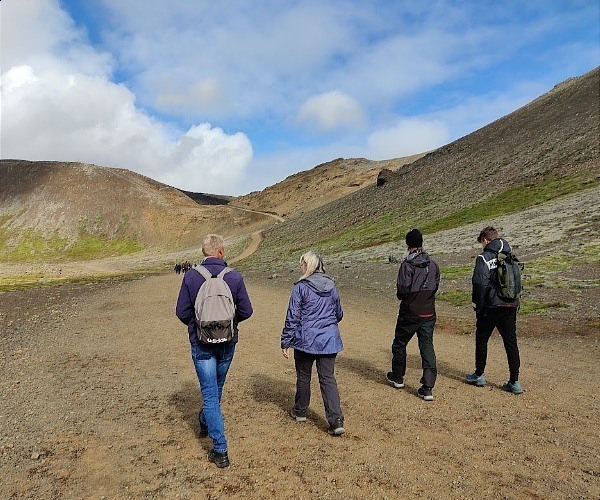
This is a fully private experience that you can enjoy with your family. Although dormant at the time of our visit, a similar tour from 2Go Iceland Travel featured on the BBC Travel Show when one of Iceland’s hottest new attractions burst onto the scene – quite literally – and the volcano was still active.
[embedded content]
Situated in the Geldingadalir Valley on the south of the Reykjanes Peninsula, approximately 40 kilometres from Reykjavik, Fagradalsfjall – although active for around one million years – lay dormant for 6,000 years, until last year when it erupted from 19th March to 18th September 2021, making it the longest-lasting eruption in Iceland for more than 50 years.
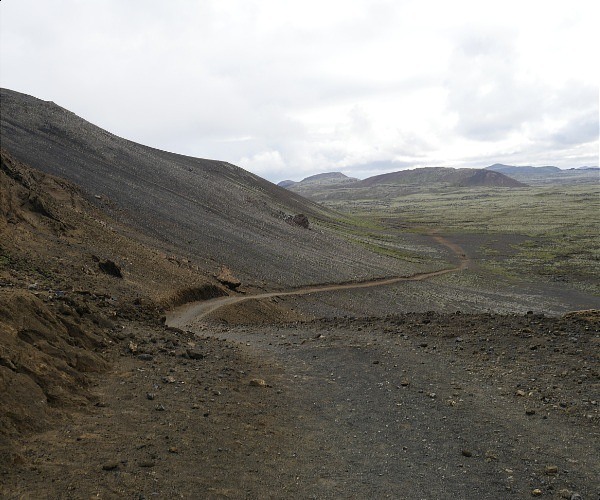
Haffi, a Manchester United supporter, told us how he happened to be watching a football match at his home in Grindavik on the evening of 19th March 2021 when his partner called to him and said “There’s a volcano outside the kitchen window”.
He got up to take a look and, whilst they couldn’t see the eruption from the window, sure enough the sky was completely orange. Haffi explained that the site of the eruption would have come as a huge relief to many Icelanders. It was originally thought that an eruption might occur 20 kilometres to the north-east of where it had occurred, which would have placed it much closer to civilisation, but fissures can open anywhere and this site was much safer from a human perspective. Funnily enough, only two hours earlier geologists at this site had concluded that an eruption was not imminent.
As we neared the lava fields from the eruption, Haffi told us that this would have been a site rarely frequented by people – maybe just a few locals. There was no car park and no hiking paths, yet relatively easy access from Reykjavik, which created a problem of chaos on the roads, and people hiking but without following any pre-defined routes. The road was closed and visitors were made to walk from The Blue Lagoon area or another side, but either way it was a walk of around 10 kilometres each way.
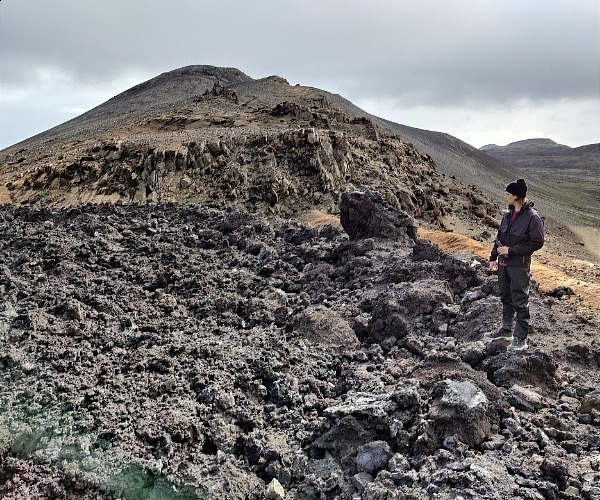
This resulted in people having to be picked up as they were exhausted along the way, or they got lost in the lava fields, creating a new problem for the rangers. They had to either close off the area completely or make it more accessible – and thankfully for everyone wanting to see this amazing phenomenon and landscape, they opted for the latter.
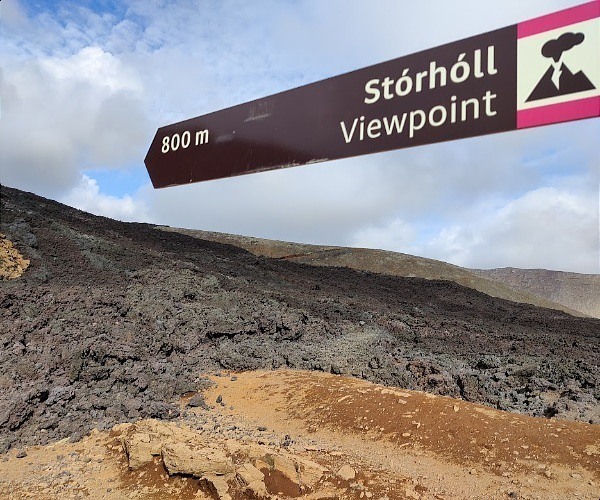
Whilst a live volcano is without doubt an incredible sight, so too is the landscape that it leaves behind and, as we gained more altitude, we were able to look in wonder at the extent of the lava fields from the eruption. By April of 2021, a 300-metre fissure had developed and, after 6 months, lava flows covered several square kilometres.
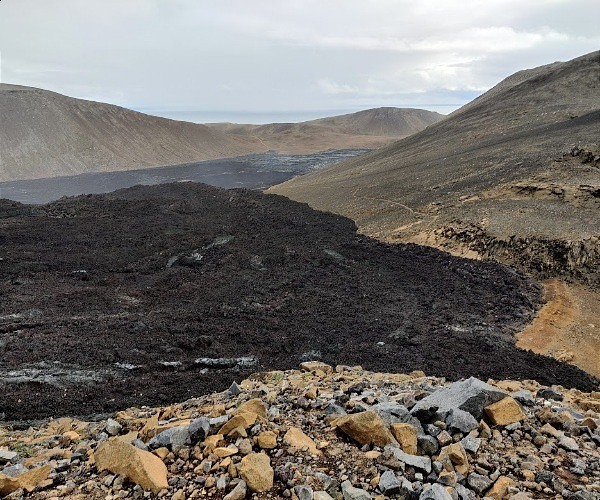
Incidentally, the landowners can’t stop people from visiting the site as there is a ‘right to roam’ policy in Iceland, unless it is fenced off from public access. So in this case, it was the landowners who created the paths and the parking. They make their revenue from the parking – they can’t charge an admission fee so it’s really the only way they can get something back from the unusual situation they find themselves in.
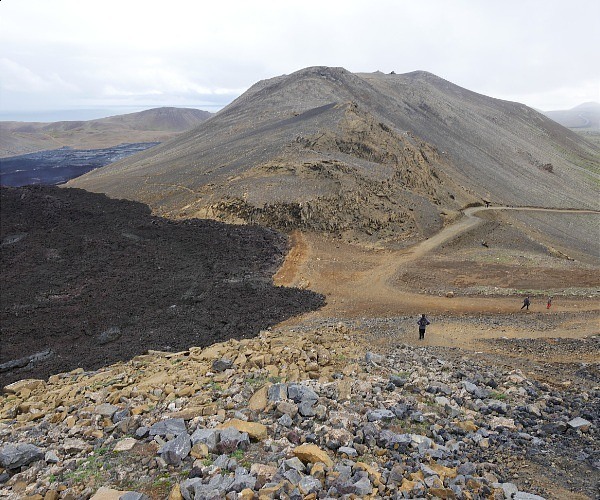
Having climbed further still, we deviated from the path to traverse part of the lava field in order to be a little closer to the crater. Unbeknown to us, Haffi had a little surprise for us, thanks to a discovery he made just a few days earlier – something that, to the best of his knowledge – nobody else knew about.
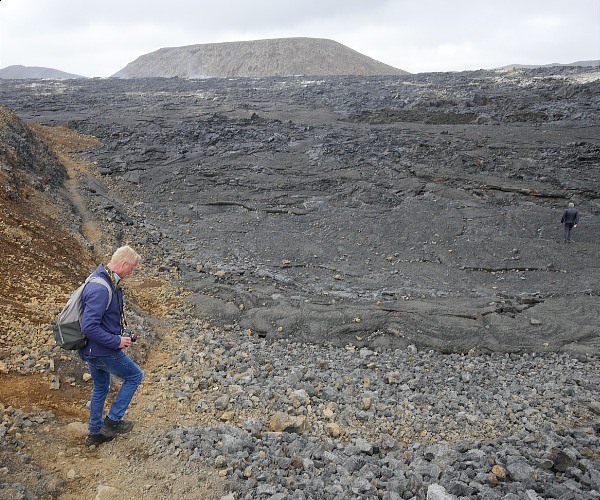
Whilst you can explore the volcano on your own, I’d highly recommend you take a guided tour to get the most from he experience. Not only will get you a more personalised insight into the region, but an expert that frequents the volcano will be able to quickly assess the abilities of your party and know the best routes to take you on.
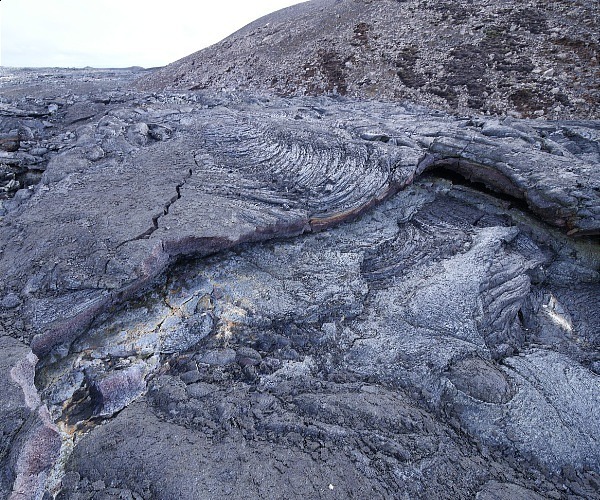
There were no injuries sustained by the eruption itself, but hikers have broken legs and arms many times (and continue to do so!). As we crossed the somewhat fragile lava, that sometimes crumbled underfoot, you could see how this might happen.
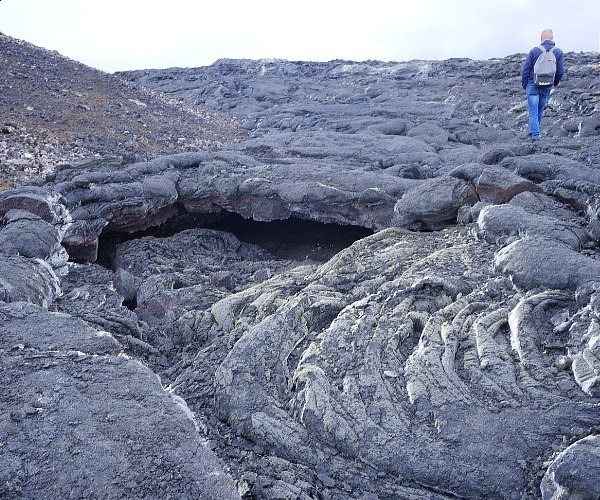
The lava was surprising brittle and lightweight. Since the lava was fast flowing, there would have been a rapid heat loss at the time of the eruption, which can increase the viscosity and cause differential flows, explaining the variety of formations that we saw before us.
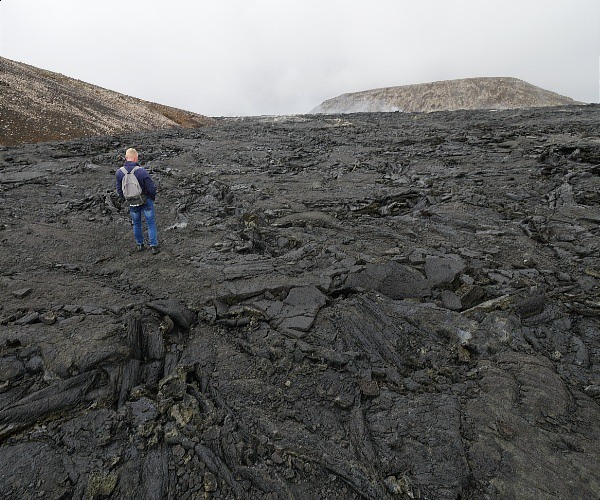
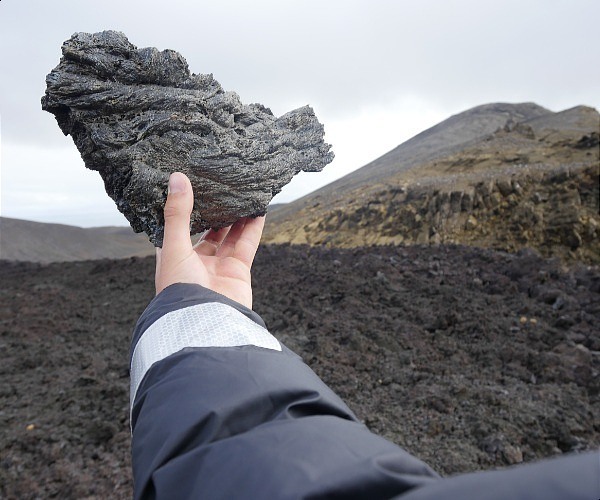
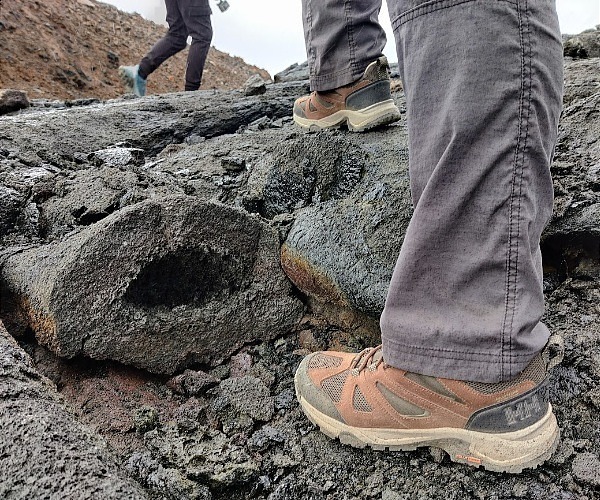
As we got nearer to the crater, we also saw more evidence of sulphur deposits (sulphur being a common chemical element found in the earth’s crust), as well as signs of heat still emanating from the earth in places.
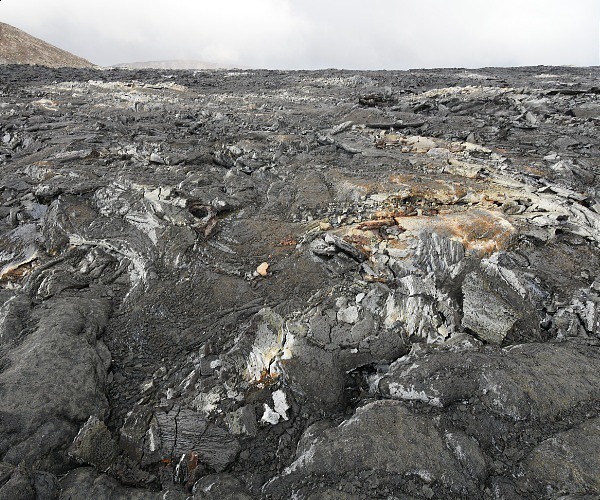
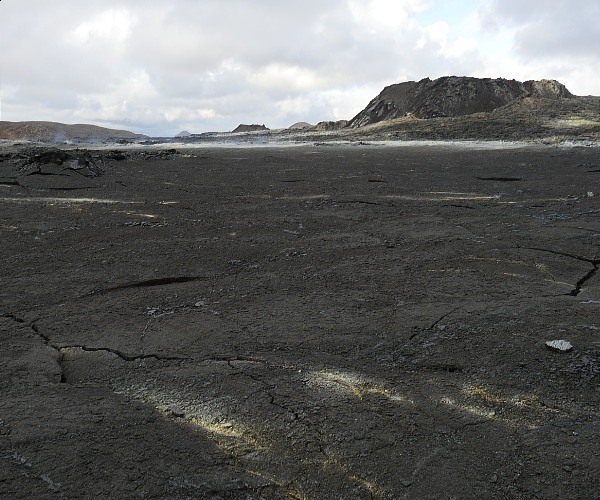
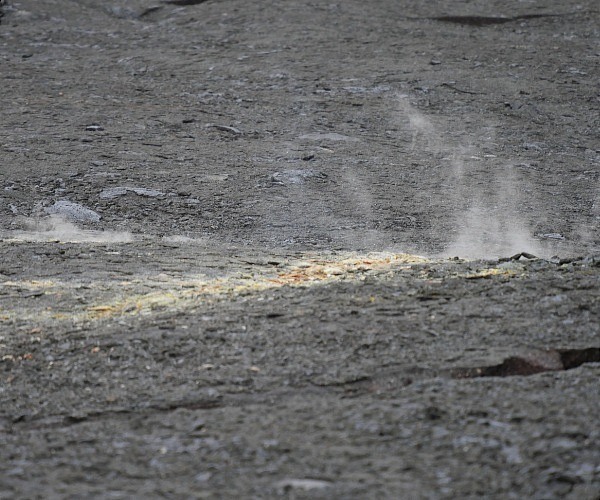
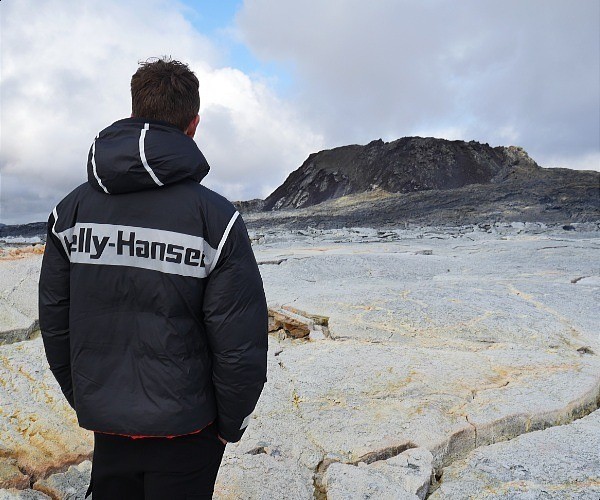
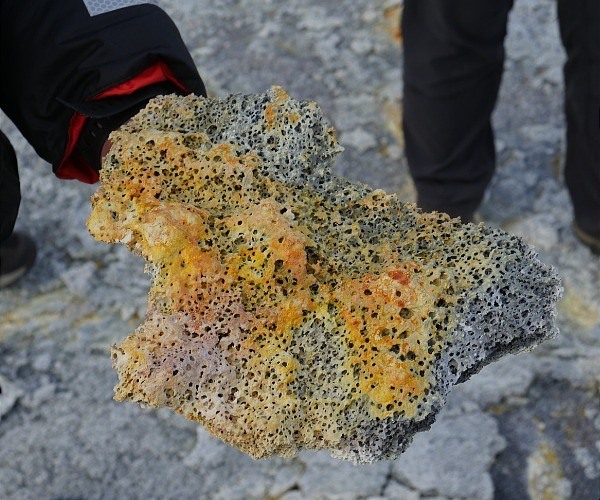
But then came the surprise… at one particular sulphurous-looking location, Haffi told us to stand back a moment whilst he went to check on the discovery he made just a few days earlier.
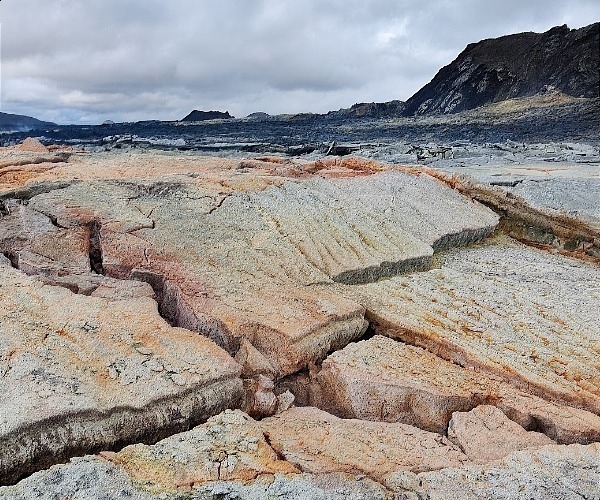
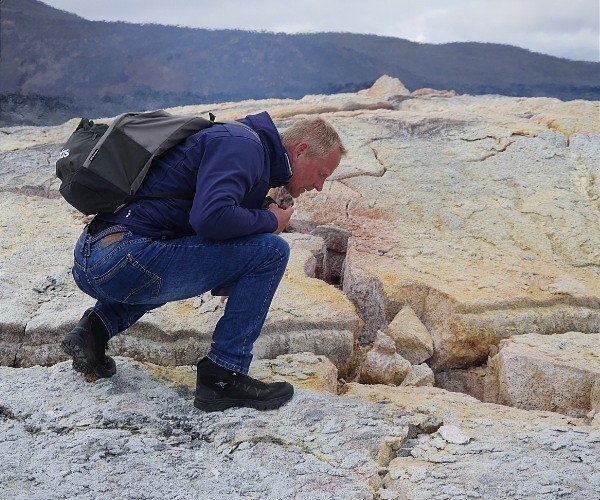
He returned, explaining to us that – if you got the angle just right – it was possible to see lava down the cracks below. This from a volcano that was declared to have stopped being active some 10 months ago! Quite rightly, Haffi said that we were welcome to take a look ourselves but that it was of course at our own risk, and to exercise care. So, one by one, we each decided to take a look.
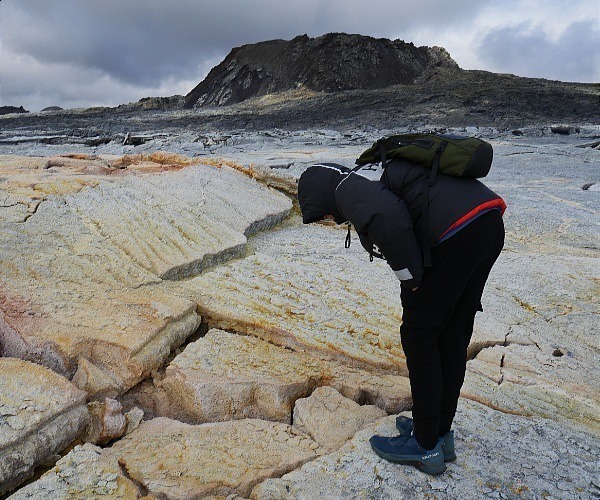
It wasn’t easy to see – and even more difficult to photograph – but sure enough, there was lava below. Seeing lava was a first for all of us, so this was a particularly exciting moment, even if we weren’t treated to the full spectacle of an active volcano, especially since it was totally unexpected.
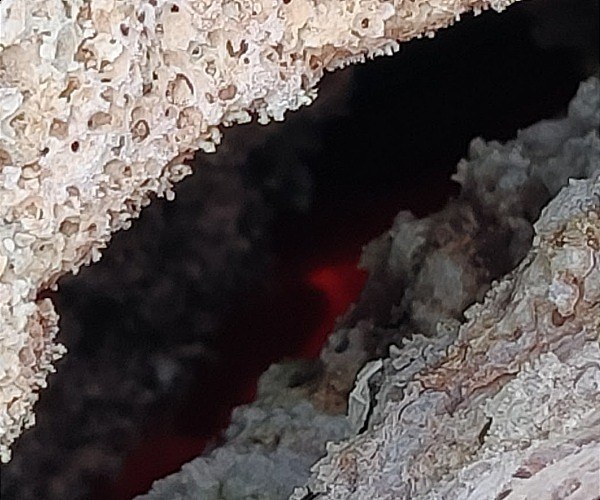
Haffi had come armed with a pan, some water and eggs, that he planned to boil to demonstrate the heat coming from below, but unfortunately there was not really a way of reliably balancing the pan over the hottest areas because of the uneven ground so we abadoned that idea. Had we not been able to see the lava with our own eyes, however, simply pouring water on the cracks and seeing it quickly turn to steam was sufficient confirmation that there was still a lot of heat below our feet.
IMPORTANT NOTICE:
If you are reading this article anywhere other than on , then the chances are that this content has been stolen without permission.
Please make a note of the web address above and contact to advise them of this issue.
Thank you for your help in combatting content theft.
The weather had been kind to us, but the clouds were coming in a little and it was now time to re-trace our steps back to the car park.
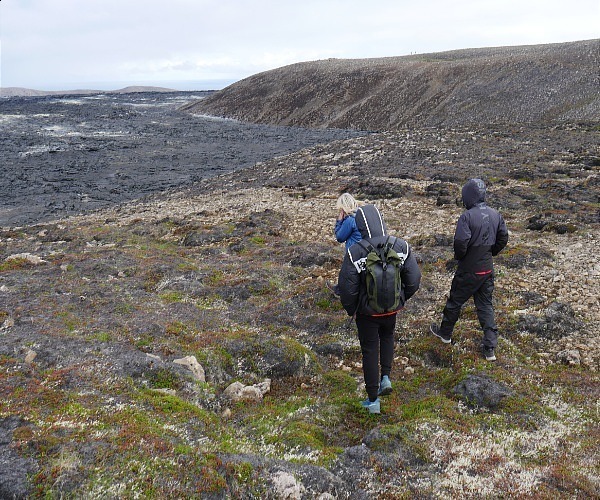
By now, it was evening but still completely light. And as we wandered back, we thought how lucky we were that, despite having only been in Iceland for a few hours, we had already seen lava in the land of ‘Fire and Ice’ (despite there being no active volcano in the country at the time).
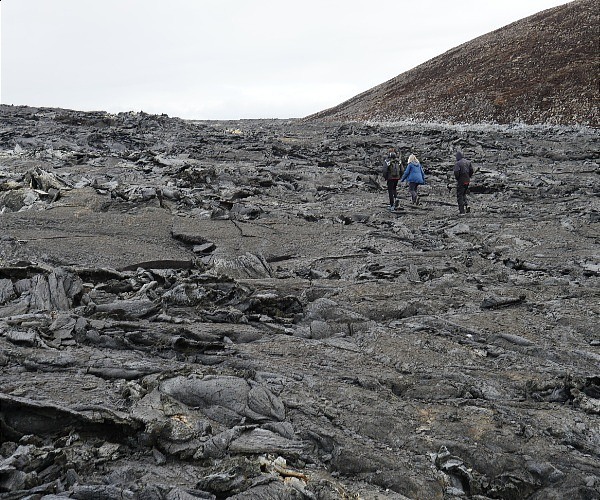
If you get the chance to do this trip, we would highly recommend it! It is a fantastic tour to do as a family, with some fabulous panoramic views.
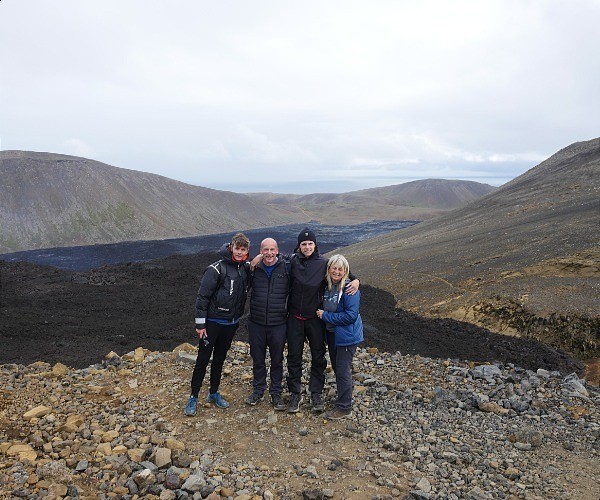
It should also be noted that, although the eruption had finished by the time of our visit in July 2022, and recorded seismic activity had been diminishing, on 3rd August 2022, the volcano erupted again when a 300-metre-long fissure opened up in the Meradalir valley area, just one kilometre from away from the 2021 eruption site that we visited and document in this article. This eruption is currently still ongoing with visits to it also of course available with 2Go Iceland Travel.
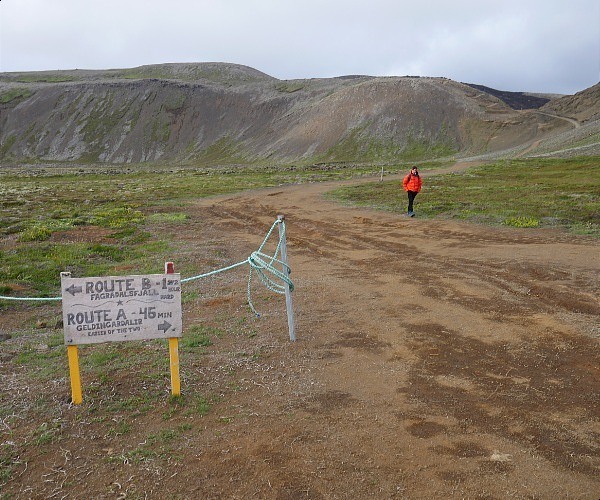
These volcanic events have drawn tourists from all around the world, giving Iceland a more immediate post-COVID tourism recovery than many other countries. And whilst current tourists will no doubt be drawn to the site of the present eruption, the site of the first eruption is still well worth a visit to admire the stunning new lava fields that have been left in its wake. And, if you’re really lucky like us… maybe you’ll see lava too!
For your convenience, the location of the volcano is marked on this Google Map…
…and the exact route of our hike can be seen here:
But do please visit with an experienced guide for the safest possible experience.
Planning a trip to Iceland yourself? You can watch a video from our trip to Iceland here. The opening 25 seconds are from our tour of Fagradalsfjall volcano site with Haffi and 2Go Iceland Travel.
[embedded content]
Disclosure: This post is sponsored by 2Go Iceland Travel. Our trip to Iceland was also sponsored by Helly Hansen.
